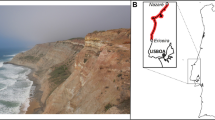Abstract
Metadata is needed to facilitate data sharing among geospatial information communities. Geographic Metadata Standards are available but tend to be general and complex in nature and also are not well suited to overcome semantic heterogeneities across vocabularies of different domains and user communities. Current formalizations of metadata standards are not flexible enough to allow reuse and extension of metadata specifications, in particular for Web based information systems. In order to address this problem we propose a methodology to create community specific metadata profiles for the Semantic Web by reusing metadata specifications and domain vocabularies encoded as resources for the Web. This ensures that these community profiles are semantically compatible so they can be used in Web based information systems. The ISO-19115:2003 geographic metadata standard is the most general standard available and is being used in conjunction with the Web Ontology Language as the expression medium to test the methodology for each one of the possible extensions documented in ISO-19115:2003. It is shown that it is possible to extend and reuse metadata specifications and vocabularies distributed in the Web using the Web Ontology Language, by utilizing the language's flexibility to create restrictions on inherit properties and to make interferences on web distributed resources. Examples from the area of Hydrology are provided to demonstrate the technical details of the approach.
Similar content being viewed by others
References
K. Baclawski, M. Kokar, P. Kogut, L. Hart, J. Smith, J. Letkowski, and P. Emery. “Extending the unified modeling language for ontology development,” Software System Model, 1:1–15, 2002.
C. Batini, S. Ceri, and S.B. Navathe. “Conceptual database design,” The Benjamin/Cummings Publishing Company, Inc., Redwood City, CA, 1992.
T. Berners-Lee, J. Hendler, and O. Lassila. “The semantic web,” Scientific American, Vol. 184(5):34–43, 2001.
Y. Bishr. “Overcoming the semantic and other barriers to GIS interoperability,” Geographic Information Science, Vol. 12(4):299–314, 1998.
CHRONOS. “An information system for chronostratigraphy,” http://www.chronos.org/index.html, 2004.
CLEANER. “Collaborative Large-Scale Engineering Analysis Network for Environmental Research,” in http://cleaner.ce.berkeley.edu/intro.php, 2004.
Commission on Geosciences Environment and Resource CGER. “A data foundation for the national spatial data infrastructure,” National Academy Press, Washington, D.C., 1995.
S. Cranefield. “UML and the semantic web,” in Semantic Web Working Symposium, California, USA, in http://www.semanticweb.org/SWWS/program/full/paper1.pdf, 2001.
CUAHSI. Consortium for the Advancement of the Hydrologic Sciences, Inc., in http://www.cuahsi.org/, 2004.
DCMI. Dublin Core Metadata Initiative, in http://dublincore.org/, 2004.
Ecoinformatics. “EML—Ecological Markup Language,” in http://www.ecoinformatics.org/tools.html, 2003.
M.J. Egenhofer. “Toward the semantic geospatial web,” in Tenth ACM International Symposium on Advances in Geographic Information Systems, ACM Press: McLean, VA, USA, 2002.
A. Elmargarmid and C. Pu. “Guest editors' introduction to the special issue on heterogenous databases,” ACM Computing Surveys, 22:175–178, 1990.
EPA, US Environmental Protection Agency, in http://www.epa.gov/, 2004.
FGDC. “Content standard for digital geospatial metadata,” Washington, D.C., 1998.
Y. Gil and V. Ratnakar. “TRELLIS: an interactive tool for capturing information analysis and decision making,” in A. Gómez-Pérez and V. Richard Benjamins (Eds.), Knowledge Engineering and Knowledge Management. Ontologies and the Semantic Web: 13th International Conference, EKAW 2002, Lecture in Computer Science, vol. 2473, pp. 37–42, Springer-Verlag: Heidelberg, Siguenza, Spain, 2002.
T. Gruber. “A translation approach to portable ontology specification,” Knowledge Acquisition 5(2):199–220, 1993.
T. Hadzilakos, G. Halaris, M. Kavouras, M. Kokla, G. Panapoulos, I. Paraschakis, T. Sellis, L. Tsoulos, and M. Zervakis. “Interoperability and definition of a national standard for geospatial data: the case of the hellenic cadastre,” International Journal of Applied Earth Observations and Geoinformation, Vol. 2(2):120–128, 2000.
F. Harvey, W. Kuhn, H. Pundt, and Y. Bishr. “Semantic interoperability: A central issue for sharing geographic information,” The Annals of Regional Science, Vol. 33(2):213–232, 1999.
J. Helly, A.A.P. Koppers, and H. Staudigel. “Scalable models of data sharing in earth sciences,” Geochem. Geophys. Geosyst, Vol. 4(1):1010, doi:10.1029/2002GC000318, 2003.
J. Hendler. “XML and the Semantic Web XML,” Journal, October, 2002.
J. Hunter and C. Lagoze. “Combining RDF and XML schemas to enhance interoperability between metadata application profiles,” in The Tenth International World Wide Web Conference, pp. 457–466, ACM Press: Hong Kong, 2001.
IRIS. Incorporated Research Institutions for Seismology, in http://www.iris.washington.edu/, 2004.
A.K.M.S. Islam, L.E. Bermudez, and M. Piasecki. “Ontology for geographic information—Metadata (ISO 19115),” in http://loki.cae.drexel.edu/~wbs/ontology/, 2004.
ISO. “Geographic information—Metadata,” 2003.
D.R. Maidment. Arc hydro Gis for water resources. ESRI: California, 2002.
D.L. McGuinness. “Ontologies come of age.” Spinning the semantic Web. D. Fensel, J. Hendler, H. Lieberman and W. Wahlster. The MIT Press: London, England, 2003.
NOAA. National Oceanic and Atmospheric Administration, in http://www.noaa.gov/, 2004.
NOKIS. North and Baltic Sea Coastal Information System. 2004.
OASIS. http://www.oasis-open.org, 2004.
OMG. “Meta-Object Facility MOF™,” version 1.4, in http://www.omg.org/technology/documents/formal/mof.htm, 2002.
OMG. “Unified modeling language specification,” http://www.omg.org/technology/documents/formal/uml.htm, 2003.
OMG. Object Management Group, in http://www.omg.org/, 2004.
A.P. Sheth. “Changing focus on interoperability in information systems: From system, syntax, structures to semantics,” in M.F Goodchild, M.J. Egenhofer, R. Fegeas, and C. Cottman (Eds.), Interoperating Geographic Information Systems, 5–29, Boston, Kluwer Academic Publishers, 1999.
K. Stocks and J. Quinn. “Data technologies: geospatial data integration,” in W. Michener and P. Tooby (Eds.), Scalable Information Networks for the Environment (SINE). Report of an NSF-Sponsored Workshop, 23–29, San Diego Supercomputer Center, 2002.
USGS. “Hydrologic Markup Language (HYDROML),” in http://water.usgs.gov/nwis_activities/XML/nwis_hml.htm, 2004.
USGS. US Geological Survey, in http://www.usgs.gov/, 2004.
W3C. “Extensible Markup Language (XML),” in http://www.w3.org/XML/, 2003.
W3C. “Ontology Web Language (OWL),” in http://www.w3.org/2001/sw/WebOnt/, 2004.
W3C. “XML Linking Language(XLink),” in http://www.w3.org/TR/xlink/, 2004.
W3C. “XML Path Language (XPath),” http://www.w3.org/TR/xpath, 2004.
Author information
Authors and Affiliations
Corresponding author
Rights and permissions
About this article
Cite this article
Bermudez, L., Piasecki, M. Metadata Community Profiles for the Semantic Web. Geoinformatica 10, 159–176 (2006). https://doi.org/10.1007/s10707-006-7577-2
Received:
Revised:
Accepted:
Published:
Issue Date:
DOI: https://doi.org/10.1007/s10707-006-7577-2




